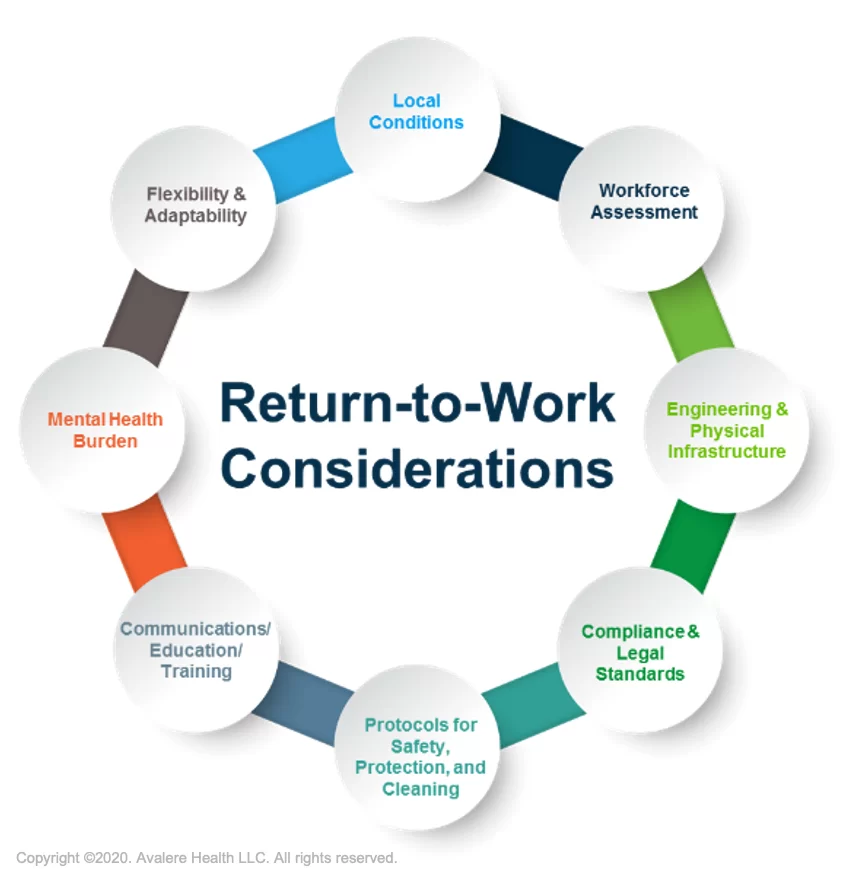Welcome to the topic “How Companies Become Industry Leaders and Increase their Bottom Line – Navigating Productivity, Innovation, and Brand Reputation with Return to Work“
Companies strive not only to stay afloat but to ascend to the coveted status of industry leaders. Achieving this feat requires a delicate balance of factors, with productivity, innovation, and brand reputation standing as pillars of success. As the global workforce grapples with the impacts of remote work, the return to the physical workspace emerges as a strategic move for companies aiming to enhance their standing in the industry and bolster their bottom line.
The Landscape of Return to Work
The era of widespread remote work marked a transformative period that defied conventional wisdom regarding productivity, dispelling preconceived notions that employees working from home would inherently be less productive. As businesses conducted comprehensive evaluations of the long-term effects on innovation, collaboration, and brand reputation, a nuanced approach to work arrangements organically took shape.

This paradigm shift acknowledges that while remote work can indeed enhance productivity, its impact extends far beyond quantitative measures. Companies began to recognize the intricate interplay between remote work and factors critical to sustained success, such as fostering innovation, encouraging collaboration, and maintaining a robust brand reputation. This nuanced approach reflects an understanding that the dynamics of the modern workplace require a careful balance, considering not only immediate productivity gains but also the broader implications for a company’s long-term growth, adaptability, and competitive positioning in an ever-evolving business landscape.
A Fresh Perspective on Remote Work: Where Work Happens Matters Less
In the past, people thought working from home meant less work would be done. Bosses were worried employees might not focus without an office. But things have changed in the last 3 ½ years as more people started working from home. Now studies show that whether you’re in an office or at home, you can be just as productive.
However, it’s not just about counting hours; it’s also about the quality of work. This is super important for companies that want to do well in the long run. As more people work from different places, it’s crucial to think about how well they’re doing their jobs, especially when it comes to coming up with new and groundbreaking ideas.
Bringing Big Ideas to Life, Even from Home
People often wonder if working from home makes it hard for teams to work together and come up with new ideas. Bosses worry that not being in the same place might stop teams from being creative. A study published in the journal Nature, which looked at 20 million scientific studies and 4 million patents over the last 50 years, found some interesting things. It showed that teams working together in person are better at coming up with breakthroughs. Being close to each other helps teams have spontaneous talks and come up with new ideas together. This kind of collaboration is vital for creating new patents and making important discoveries. The study says that for companies that want to be leaders in creating new technologies, having everyone work in the same place is not just helpful–it’s crucial.
Building a Good Reputation in a Digital World
A company’s success goes beyond just being productive and coming up with new ideas. How people see the company, what they think about it, and whether they trust it are super important too. Things like trust, getting the best talent to join, and being a leader in the industry all depend on how people perceive the company. The actual office space is like a real-life example of how professional, valuable, and committed to being excellent the company is.
Frequently companies are wanting to use their office space to show their excellence and achievements. Some organizations want new office space not just to be more innovative but also to make clients and potential clients think even more highly of them when they visit. A space can exemplifya business’s level of professionalism.

Even though working from anywhere has its benefits, like being flexible and saving money, it can make it hard for a company to show how good it is. Having a well-designed and smartly located office is a clear sign of how professional the company is. It helps people see the company, build trust, meet face-to-face for important connections, and improve the overall picture of the company. When people can’t see the office, these important things become less clear, and it might affect how clients see and trust the company.
Also, having a real office is crucial for making the team feel like they’re part of something bigger. The teamwork and shared goals that happen in a real office help build a strong company culture and make everyone feel connected. With remote work, even though it’s flexible, it might make the team feel a bit isolated, affecting how happy and connected everyone feels. So, finding the right mix between the good parts of remote work and having a physical office is super important for companies dealing with how to be productive, creative, and keep a good reputation in the ever-changing world of work.
Finding the Right Mix
As companies figure out how to bring their teams back to work, they need to find a good balance. Business owners must think about how much they depend on new ideas and what kind of work they do. Instead of making everyone come back to the office in the same way, companies should make rules that fit each team and job. This way, they can make sure everyone has what they need to do their best work.
Lessons from the Return to Work Landscape
The return to work landscape offers valuable lessons for companies seeking to solidify their position as industry leaders:
Assessing Innovation Goals:
Companies need to take a close look at their innovation goals. This means figuring out if their work requires big, groundbreaking changes or if it’s more about making steady, gradual improvements. For jobs that involve consistent and steady tasks, it’s important to use technologies that help with making things bigger and better, even when working remotely. Understanding the kind of work and whether it relies on major breakthroughs or smaller improvements helps companies plan how their teams can work best from different locations. This assessment allows for a flexible and detailed approach, making sure the company’s goals for innovation match up with the most effective way of working for long-term success.
Aligning Physical Presence with Reputation:
When clients are looking for a new physical space, it shows how important it is to connect the way a company works with its reputation. Companies should realize that their workplace isn’t just a place to get things done – it’s a real-life representation of how professional, valuable, and excellent they are. This connection is crucial when clients form an opinion about the business. Deciding between remote work and working in the office should consider all the different things that go into keeping a positive reputation. A well-designed and well-located physical space not only adds to how the company is seen but also gives clients and potential clients a chance to see how professional the company is in person. This balance is key to keeping success going in the long run.
Innovation versus Incremental Improvements
Understanding how much your business relies on innovation versus making small improvements is a key factor in deciding whether to bring employees back to the office or continue with remote work. Innovation is crucial for companies to grow, stay adaptable, and compete in a changing market. Some businesses, like those in creative or tech fields, need big, groundbreaking ideas. Others, with more stable and regular work, might benefit from smaller, gradual improvements. Figuring out what type of work your business does helps decide if remote work or returning to the office is the better fit, making sure it meets the specific innovation needs of the company.
Policies based on Specific Teams and Functions
When it comes to work arrangements, using the same rules for everyone might not be the smartest move. Organizations have different teams and job functions, each with its own tasks and the way they work together. Having one set of rules for everyone ignores these differences and might not lead to the best results. Making policies that fit the needs of specific teams or individual jobs allows for a more flexible approach. Some teams might do well working remotely, while others need to be in the office. Taking these differences into account not only makes things run more smoothly but also makes employees happier, as it acknowledges and supports the unique needs of different parts of the organization.
Examples and Ideas of Hybrid Work
As companies navigate the evolving landscape of work arrangements, various ideas and strategies have emerged in the realm of hybrid and office-sharing concepts. One common approach is the adoption of flexible schedules, allowing employees to split their time between working from home and being present in the office. This flexibility provides individuals with the autonomy to choose the environment that suits their work style, promoting a healthy work-life balance. Additionally, staggered work hours or compressed workweeks have been implemented by some organizations, contributing to reduced commuting stress and increased employee satisfaction.
Another innovative idea involves creating designated collaboration zones within the office space. These areas are designed to encourage teamwork, brainstorming sessions, and in-person collaboration, fostering a sense of connection among team members. By designating specific spaces for collaborative activities, companies aim to capture the benefits of in-person interaction while still allowing flexibility for remote work when focused individual work is more suitable. This concept acknowledges the importance of both collaborative efforts and individual contributions within the work dynamic.

Furthermore, some companies have explored the concept of “hot desking” or shared workstations. In this setup, employees don’t have assigned desks but rather choose an available space upon arriving at the office. This approach optimizes the use of office real estate, reduces costs, and encourages a more dynamic and fluid work environment. However, successful implementation requires thoughtful planning to ensure that employees still feel a sense of belonging and have access to the tools and resources they need for their tasks. Overall, these innovative concepts showcase the adaptability and creativity of organizations seeking to find the right balance between in-person and remote work in the modern business landscape.
Conclusion: A Strategic Approach to Return to Work
The return to work represents more than a mere transition from remote settings to physical offices. It is a strategic move for companies aspiring to become industry leaders and enhance their bottom line. Acknowledging the undeniable benefits of remote work, companies must carefully navigate the potential drawbacks that could impact innovation and brand reputation.
The lessons learned from the productivity paradigm shift, the dynamics of innovation in remote settings, and the influence of physical workspace on brand reputation offer a roadmap for companies. By adopting a nuanced approach that aligns with the unique objectives of the business and the aspirations of individual employees, companies can strike the right balance between current trends and timeless principles of success.
The return to work is not just a physical return; it is a return to the core values and goals that drive a company’s sustained prosperity. In this dynamic landscape, the companies that master the art of balancing productivity, innovation, and brand reputation will not only lead their industries but will also see a positive impact on their bottom line.
Be sure to check out the Business Insider article that inspired this post!
Also read: Crafting the Ideal Workspace in Chicago CRE: Designing for Innovation and Success
TAGS